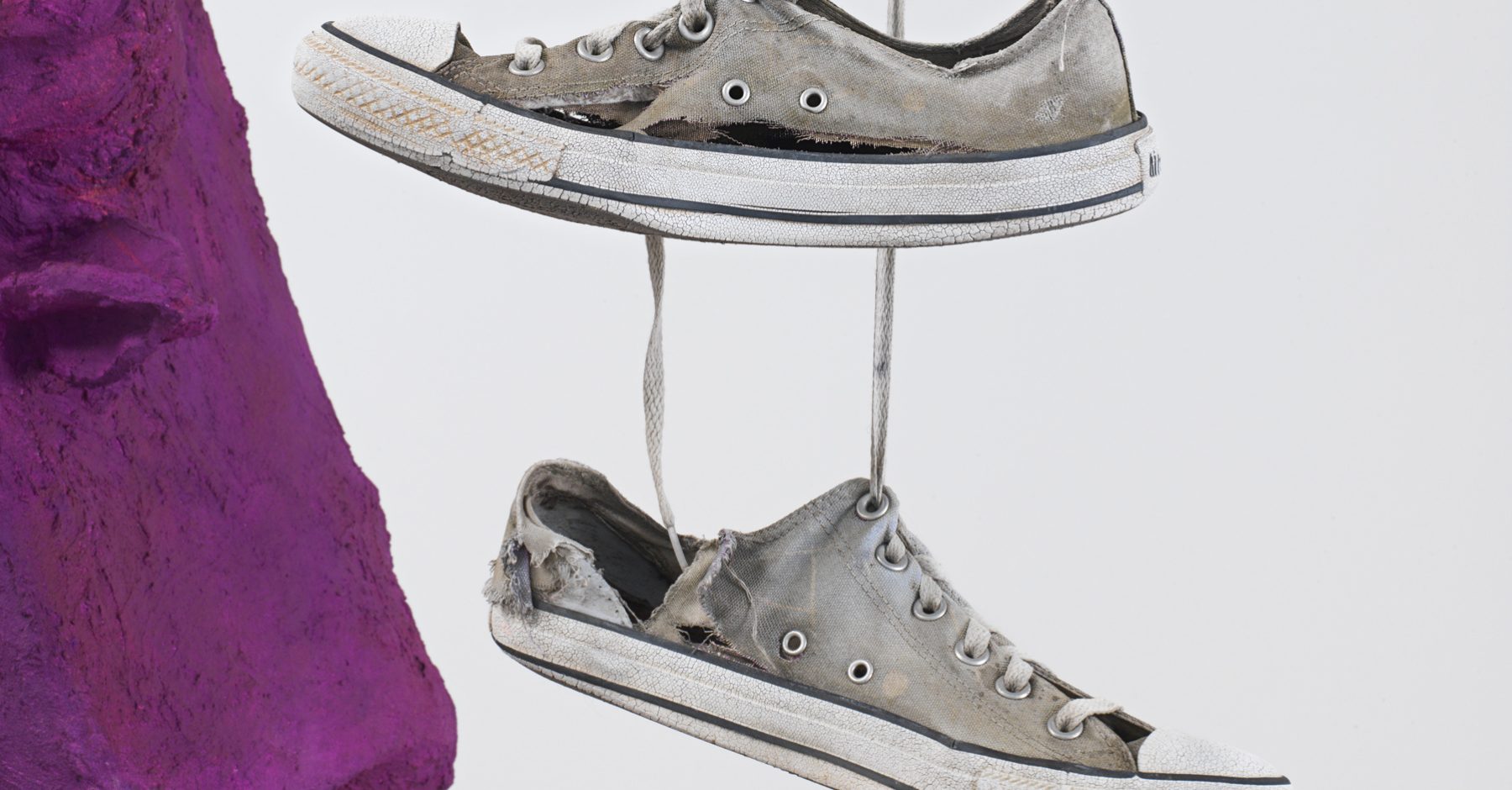RACHEL HARRISON on the cover of Border Crossings


Since the early 1990s, Brooklyn-based artist Rachel Harrison has developed a visual language at once citational and abstract, built up of three-dimensional shapes that tempt recognition but exist, in the artist’s words, as “forms that can’t be described.” Across sculpture, photography, video, and drawing, Harrison deploys strategies resonant with, yet independent of, art movements including Neo-Dada, Pop, Minimalism, and Conceptual Art. Her wry use of celebrity imagery and commercial objects suggests what Johanna Burton terms “inappropriation”: “not really taking a thing so much as acknowledging its multifaceted nature in a world that will shape it and reshape it.” Often, Harrison effects the reshaping herself, lodging familiar images within roguish assemblages of artistic and para-artistic matter, from rope and household tools to polystyrene and cement, the latter materials often painted in vivid colors to forge her distinctive sculptural style. Toying with signs, surfaces, and modes of display, her objects can serve as framing devices—to repurpose Harrison’s term for a recent body of work—inviting both semiotic and phenomenological readings without submitting to either mode of interpretation. Circumambulating a Harrison provokes continual cross-referencing and new revelations, with respect not just to the work at hand but to the particular space and viewer it activates.
Conversant in the language of postwar avant-gardes (her work has variously referenced Michael Asher, Fred Sandback and Anne Truitt, among others), Harrison nevertheless carved her own path early on. If her deft, sometimes jarring use of multiple media and taste for the absurd or grotesque—in both material and ideological form—align her with closer contemporaries like Mike Kelley or Cady Noland, her vision of America has a singular cast. For Hal Foster, that vision is filtered through a keen eye for “the mythic thinking that persists in popular culture.” Harrison’s work, Foster writes, is “concerned less with exposing cultural myths than with retelling them, often in a perverse way.” Appreciative but skeptical, engaged but esoteric, and shot through with a fierce sense of humor, Harrison jumbles hierarchies of taste and form. In turn, she provides an off-kilter examination of our shifting art, pop, and political landscapes, with a prescience that has infused numerous international solo exhibitions, such as Rachel Harrison Life Hack, a major 2019-20 survey at the Whitney Museum.

Rachel Harrison lives and works in New York. Museum exhibitions of her work have been held at Astrup Fearnley Museet, Oslo (2022–23); Whitney Museum of American Art, New York (2019–20); The Museum of Modern Art, New York (2016); The Cleveland Museum of Art, Cleveland (2015); Kestner Gesellschaft, Hannover (2013); and S.M.A.K., Ghent (2013); Whitechapel Gallery, London (2010); Portikus, Frankfurt (2009–10); and CCS Bard, Annandale-on-Hudson, New York (2009). Significant recent group exhibitions include Museum of Contemporary Art, Los Angeles (2024); Art Institute of Chicago, Chicago (2020); Musée des beaux-arts de Montréal, Montreal (2020); Yorkshire Sculpture International 2019, Leeds Art Gallery, Leeds, England; Getty Villa, Los Angeles (2018); The Met Breuer, New York (2018); Le Consortium, Dijon (2018); Aspen Art Museum, Aspen (2018); San Francisco Museum of Modern Art, San Francisco (2017); Hessel Museum of Art, Annandale-on-Hudson (2016); Walker Art Center, Minneapolis (2016); Museum Brandhorst, Munich (2015); and mumok, Vienna (2015).
Major public collections include the Art Institute of Chicago; Astrup Fearnley Museet, Oslo; Centre Georges Pompidou, Paris; Cleveland Museum of Art; Dallas Museum of Art; Hessel Museum of Art, Bard College, Annanale-on-Hudson, New York; Hirshhorn Museum and Sculpture Garden, Washington, DC; Institute of Contemporary Art, Boston; The Metropolitan Museum of Art, New York; Moderna Museet, Stockholm; Museum of Contemporary Art, Los Angeles; Museum Ludwig, Cologne; The Museum of Modern Art, New York; Philadelphia Museum of Art; Saint Louis Art Museum; San Francisco Museum of Modern Art; Solomon R. Guggenheim Museum, New York; Stedelijk Museum, Amsterdam; Tate Modern, London; Walker Art Center, Minneapolis; and the Whitney Museum of American Art, New York; among others.
Lars Bang Larsen on RACHEL HARRISON for Astrup Fearnley Museet, Oslo, 2023
Darby English in conversation with RACHEL HARRISON for Hirshhorn Museum and Sculpture Garden, Washington, DC, 2021
RACHEL HARRISON, Leslie Hewitt, Hal Foster and Jeffrey Weiss discuss Donald Judd, MoMA, New York, 2020